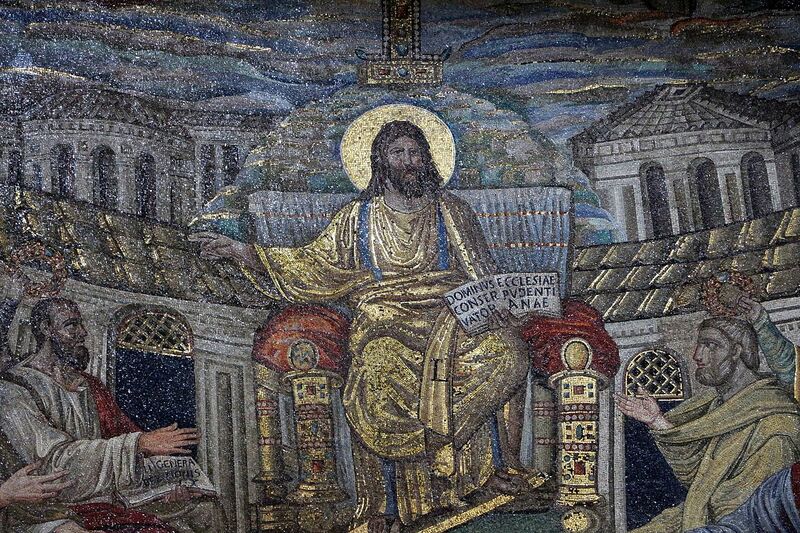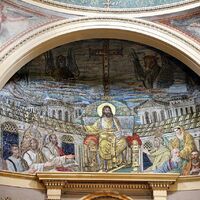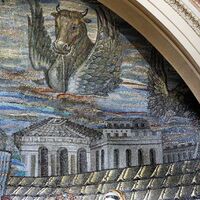Santa Pudenziana apse mosaic
Date:
ca. 401–17
Location or Findspot (Modern-Day Country):
Italy
Description:
The apse mosaic of in the church of Santa Pudenziana in Rome is the earliest known apse mosaic. Although it was significantly restored in the sixteenth century, it nevertheless retains elements of its original composition. Christ sits on a throne (Christ in Majesty), extending his right arm in speech and wearing a toga in the style of a Roman teacher. His open book reads "Dominus conservator ecclesiae Pudentianae" (the Lord is the preserver of the church of Pudentiana). He is surrounded by the Apostles, also dressed in togas, and two women who may be saints Pudentiana and Praxedes (martyred sisters) or representations of the Church and Syangogue. The two women hold wreaths above the heads of Peter and Paul.
The scene transpires within the Heavenly Jerusalem, with a jeweled cross (sometimes called a "crux gemmata") visible on Golgotha. An angel, lion, ox, and eagle flank the cross. This is the earliest representation of the symbols associated with the Evangelists. They were adapted from the four "living creatures" described in the book of Ezekiel as part of the prophet's vision of God in heaven (1:1–14). The four creatures also reappear in the Apocalypse, or book of Revelation (4:7).
The scene transpires within the Heavenly Jerusalem, with a jeweled cross (sometimes called a "crux gemmata") visible on Golgotha. An angel, lion, ox, and eagle flank the cross. This is the earliest representation of the symbols associated with the Evangelists. They were adapted from the four "living creatures" described in the book of Ezekiel as part of the prophet's vision of God in heaven (1:1–14). The four creatures also reappear in the Apocalypse, or book of Revelation (4:7).
Relevant Textbook Chapter(s):
2
Image Credits:
Wikimedia Commons



